Annotated by GM Alexander Kalinin
The tournament is becoming more exciting as its favorites begin to meet serious resistance. For example, the winner of the last Moscow open, GM Ernesto Inarkiev, barely managed to avoid losing to young Moscow IM Maksim Vavulin.
In the following game, however, nothing could bail out the higher-rated player of the difficult situation.
Death by suffocation
It was a classical strategic game by White in the Benoni Defence. At the end, the black pieces could neither move nor breathe.
KORCHMAR, Vassily - ALEKSEENKO, Kirill
Russia Cup Stage 2016
1.d4 Nf6 2.c4 e6 3.g3 c5 4.d5 exd5 5.cxd5 d6 6.Nc3 g6 7.Nf3 Bg7 8.Bg2 0–0 9.0–0 a6 10.a4 Nbd7 11.Bf4
In the 20th century, the maneuver invented by Aron Nimtsovitch - 11.Nd2 with further Nc4 - used to be the main line. Now the fashion has somewhat changed.
11...Qe7
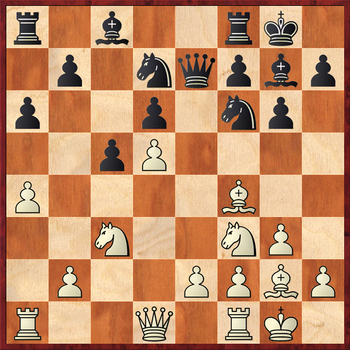
12.Rb1
This is quite a rare move with the idea of preparing b2-b4. 12.h3, restricting the f6-knight, is played more often.
12...Ng4
A typical maneuver for the Benoni Defense – the black knight goes to е5. In the game V. Tkachiev – A. David (France 1999) Black preferred 12...Nh5, but after 13.Bg5 f6 14.Bd2 f5 15.Ng5! (15.b4 f4!) 15...Ndf6 16.b4! c4 17.b5 a5 18.b6! White seized the initiative.
13.Bg5 f6
The retreat 13…Qe8 seems disharmonious, while 13...Bf6 14.Bxf6 Ndxf6 exchanges the g7-bishop which is an important piece for Black in such structures. GM Igor Stohl points out that it’s not high time for 15.b4? in this position because of 15…Ne3!, recommending 15.h3 Ne5 16.b4 instead. After 16…Bf5, however, the black pieces are quite active. It looks like the best option for White is to return to the Nimtsovitch idea - 15.Nd2! with better chances.
14.Bd2
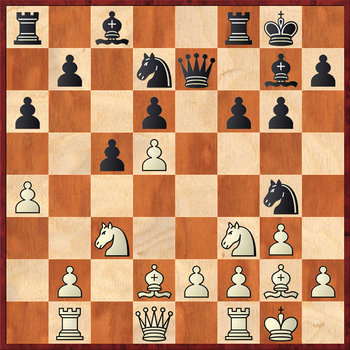
14...Re8?!
This move seems to be unnecessary. With the pawn on f6 and the knight on g4, Black's position is somewhat disharmonious - this should have been rectified in the first place. The most logical continuation is 14...Nge5 (14...f5 could be met by 15.Ng5).
After 14... Nge5 the game B. Avrukh – P.Eljanov (Istanbul 2012) saw 15.b4 cxb4?! 16.Rxb4 Nxf3+ 17.exf3! f5 18.a5 Qd8 19.Qa4 Nc5 20.Qa3 Bd7 21.Rb6 Qf6 22.Rc1 Rfe8 23.Bf1 Rac8 24.Nd1 with clear advantage for White. As pointed out by Boris Avrukh in his annotations, Black's 15th was inaccurate - instead he recommends 15...b6! keeping the pawn structure elastic.
15.a5 Nde5
The black knight goes away from the b6- and c5-squares, which significantly increases the effect of the b2-b4 breakthrough. The position was already requiring urgent measures to keep the queenside pawn structure undamaged. 15...b5!? was worth considering: 16.axb6 a5! (in case of 16...Nxb6 17.b4! or 16...Rb8 17.b4! the white khight would get an access to the d4-square), radically preventing the b2-b4 advance.
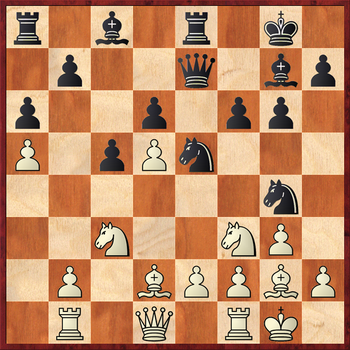
16.b4!
Now everything goes like clockwork - White exposes the opponent's pawn weaknesses, while Black doesn't even get the c5-square for his knight in compensation.
16…cxb4 17.Rxb4 Nxf3+ 18.exf3!
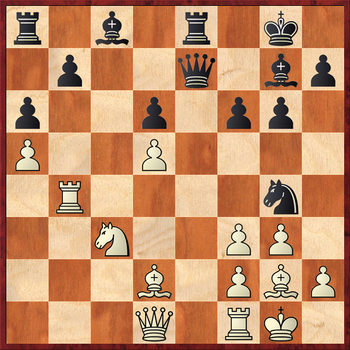
The e2xf3 recapture is an important priyome! Black pieces lose strongholds in the center, and the opening of the e-file makes it easier to access the vulnerable e6-square. From now on, White methodically forces the opponent's army out of the battlefield, which results in Black being nearly suffocated.
18...Ne5 19.f4 Nf7 20.Re1 Qd8 21.Rxe8+ Qxe8 22.Na4 Rb8 23.Nb6 Bf5 24.Be3
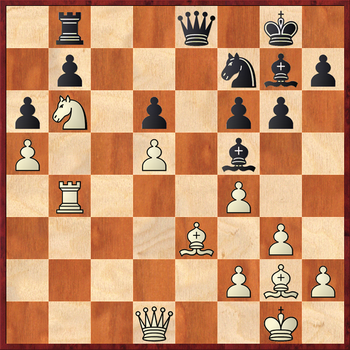
24...g5 25.Bf3!
Of course the f4-pawn shall not leave its place, so White doesn’t pay attention to g6-g5 at all.
25…gxf4 26.Rxf4 Bg6 27.Bg4! Ne5 28.Be6+ Kh8
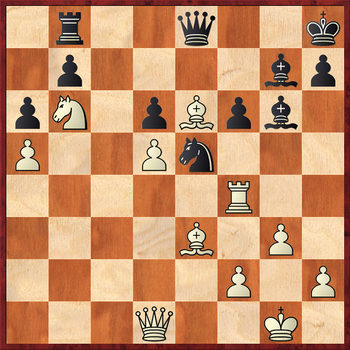
Now the f2-pawn is taking the place of its perished colleague.
29.Rh4 Nf7 30.Bd4 Ng5 31.Bd7 Qe7 32.f4

32...Bc2
Black tries to invent something desperately as his pieces are really lacking space.
33.Qxc2 Nf3+ 34.Kf2 Nxh4 35.gxh4 f5 36.Bxg7+ Qxg7 37.Bc8 Qd4+ 38.Kf3 Qa1 39.Qxf5 Qd1+
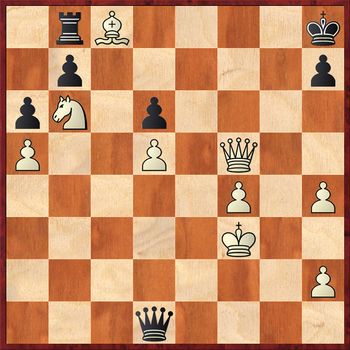
The black queen is annoying like a fly but the white king manages to escape from diagonal checks using the h3-square.
40.Kg3 Qg1+ 41.Kh3! Qf1+ 42.Kg4 Qg2+ 43.Kh5 Qg7 44.Qe6 Qf8 45.f5 1–0













